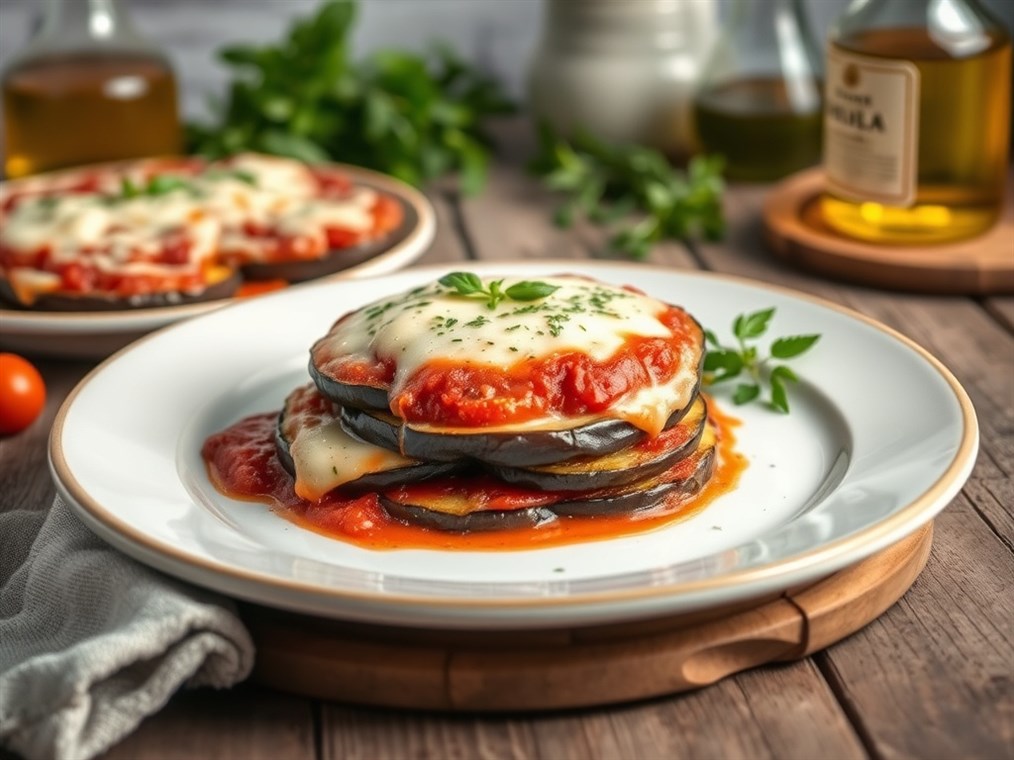Eggplant Parmesan: Freeze Now, Eat Later? Let’s Talk Strategy.
Eggplant Parmesan. Melanzane alla parmigiana. Whatever you call it, this dish is pure comfort food. Layers of tender eggplant, that rich, bubbly tomato sauce, and perfectly melted cheese… chef’s kiss. But what’s the best way to keep this goodness on hand for a busy weeknight? Should you freeze it before or after baking? Well, grab a fork, because the answer isn’t as straightforward as you might think.
Freezing it raw – assembling everything and then hitting the pause button – definitely has its appeal. I mean, who doesn’t love a shortcut?
Here’s the lowdown on freezing before cooking:
Basically, you layer everything like you normally would in a freezer-safe dish. Then, you wrap it up super tight – plastic wrap first, then a layer of foil for good measure. Think Fort Knox for frozen food! This helps prevent that dreaded freezer burn. Then, into the freezer it goes for up to three months.
The Upsides:
- Major Time Saver: You only have to assemble the dish once. That’s a win in my book.
- Super Flexible: Perfect for those nights when you’re staring into the fridge, wondering what to make.
The Downsides (and they’re worth considering):
- Texture Tango: Let’s be honest, the eggplant can get a little…watery. And that crispy breading? It might lose its mojo.
- Sogginess Alert: The sauce can be a sneaky culprit, seeping into the eggplant and turning the whole thing into a mushy mess. No one wants that.
- Eggplant MUST be pre-cooked: This is important, otherwise the eggplant will be flavorless and not cook all the way through.
Pro Tips for the Pre-Bake Freeze:
- Sweat It Out: This is key. Salt those eggplant slices and let them chill for about 30 minutes. This draws out extra moisture. Pat them dry before layering!
- Cheese to the Rescue: Think of cheese as a delicious barrier. Layering it between the eggplant and sauce can help prevent the dreaded sogginess.
- Patience is a Virtue: Thaw that bad boy completely in the fridge before baking. This ensures everything cooks evenly.
- Bake from Frozen (If You Dare): You can bake it straight from the freezer, but be prepared to add some extra time to the cooking.
- Airtight is Key: Use an airtight container to keep the eggplant parmesan from getting freezer burn.
Now, let’s talk about the other option: freezing after cooking. This is all about preserving that perfect texture.
Here’s the drill for freezing after baking:
First, let the eggplant parmesan cool down completely. Then, if you’re feeling organized, cut it into individual portions. Wrap each portion tightly in plastic wrap or pop them into a freezer-safe container or bag.
The Perks:
- Texture Triumph: The eggplant is less likely to turn into a soggy disaster compared to freezing it raw.
- Grab-and-Go Goodness: Pre-portioned servings mean you can have a quick and easy meal whenever you want.
The Potential Pitfalls:
- Extra Step Required: You gotta fully cook the dish before freezing. It’s a bit more time, but maybe worth it?
- Sogginess Still Lurks: While the texture is generally better, you still need to be mindful of potential sogginess.
Smart Moves for the Post-Bake Freeze:
- Flash Freeze First: Lay those wrapped portions on a baking sheet and freeze them for an hour or two before tossing them into a freezer bag. This keeps them from sticking together like glue.
- Reheat with Care: Reheat in a preheated oven until it’s all warmed through and the cheese is bubbly and irresistible.
So, what’s the final word?
Honestly, it depends on what matters most to you. If you’re all about saving time, freezing before cooking is a solid option, just remember those tips to fight sogginess. But, if you’re a texture fanatic and willing to spend a little extra time, freezing after cooking is the way to go.
Whatever you decide, remember that frozen eggplant parmesan is best enjoyed within three months. With a little planning and some smart freezing techniques, you can have a taste of Italy ready whenever those cravings hit!

